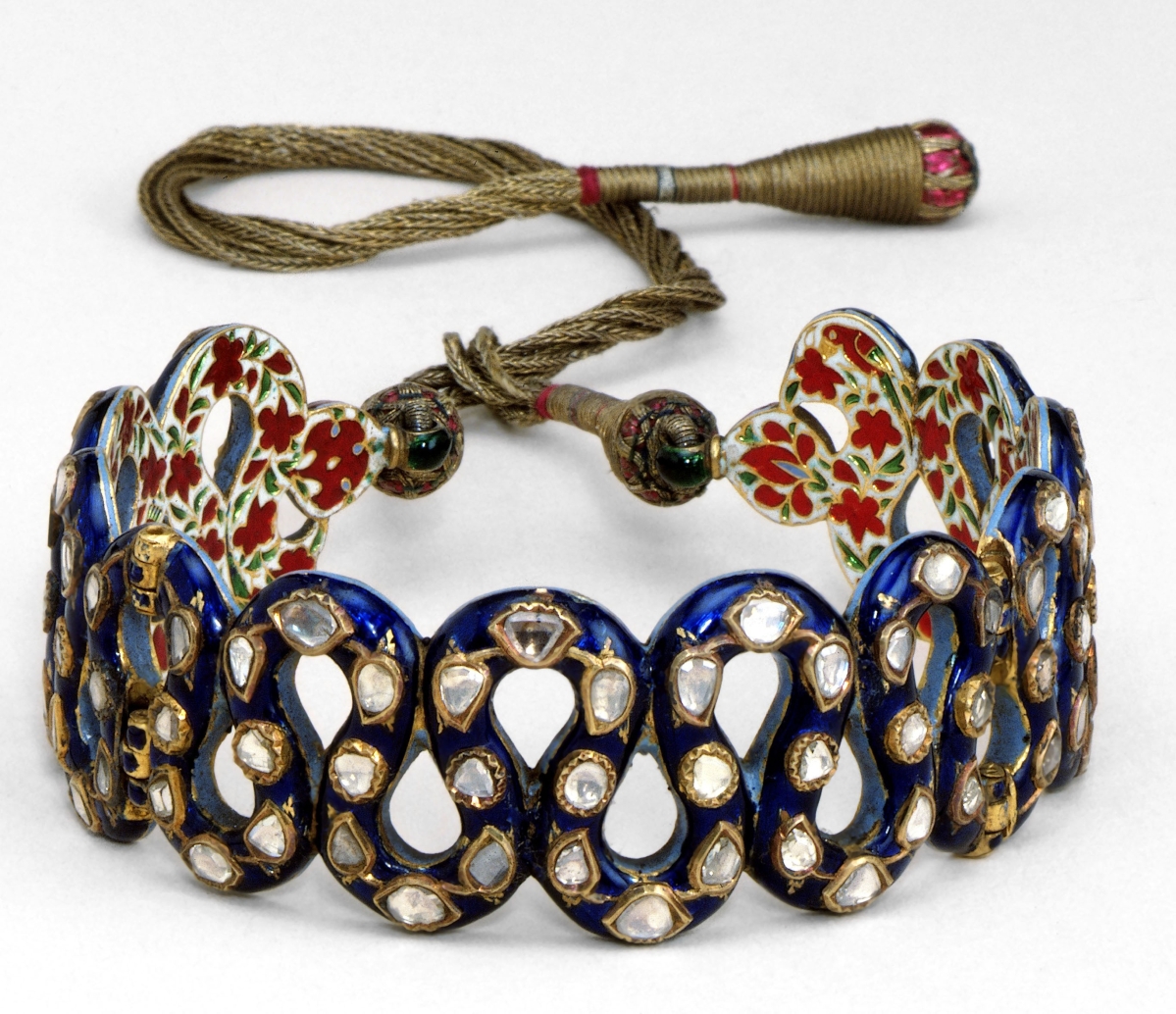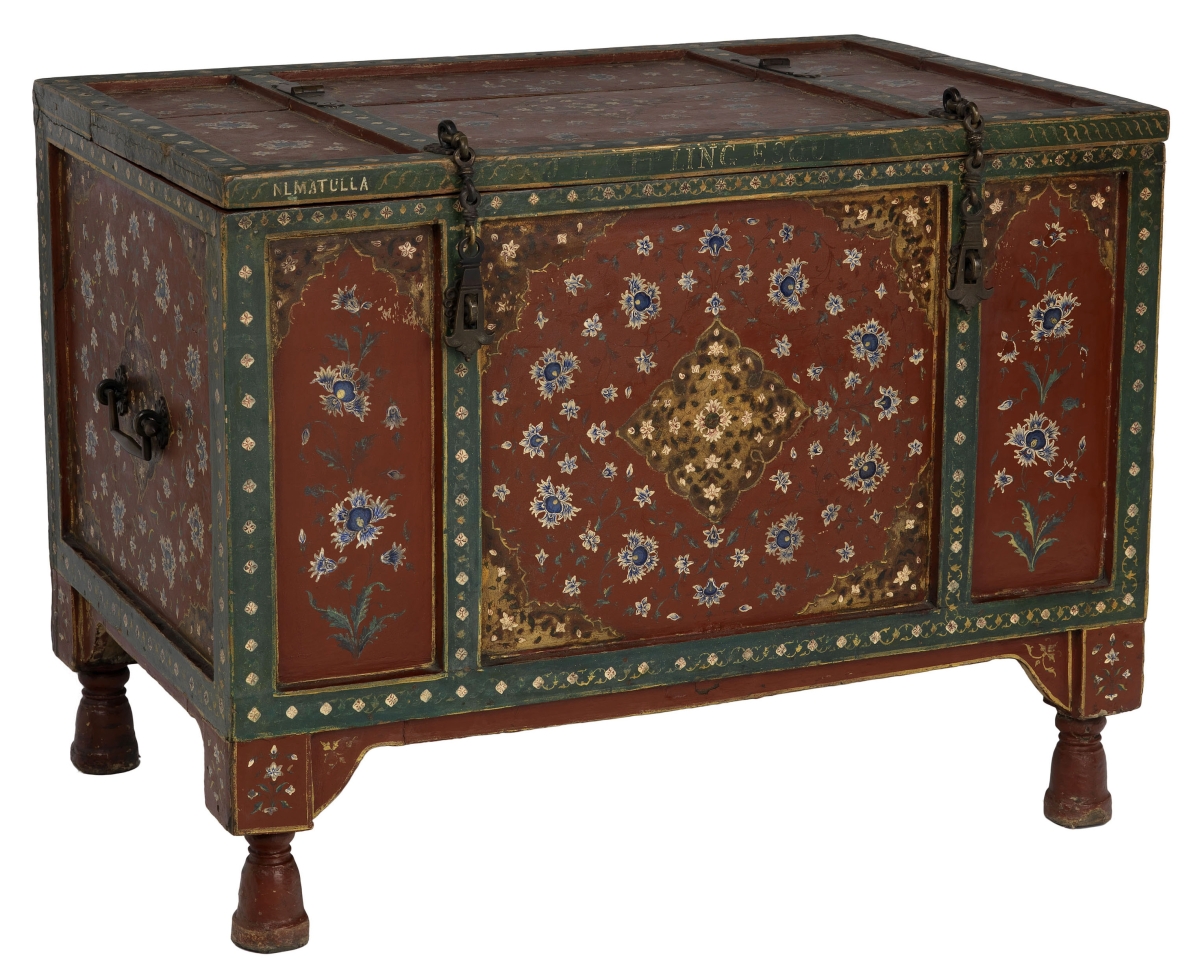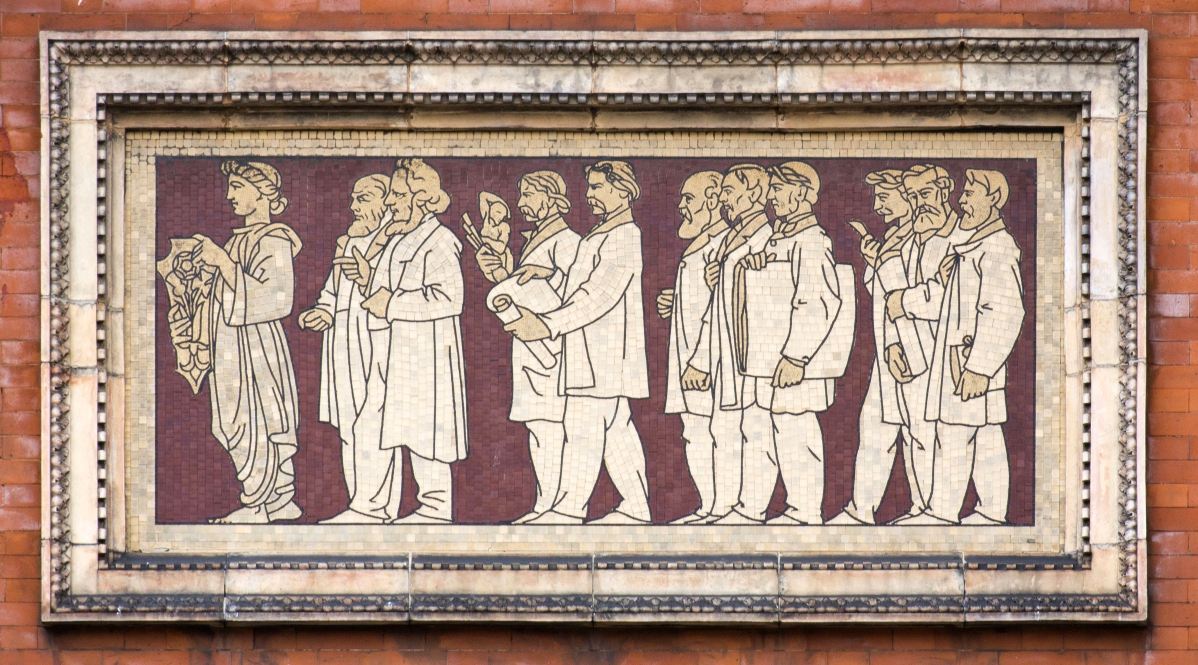
Gold and enamelled bracelet set with diamonds, shown at the Great Exhibition, made in Rajasthan by an India artist, circa 1850. ©Victoria and Albert Museum, London
LONDON – The Victoria and Albert Museum has collaborated with the Bard Graduate Center, New York, to present the first exhibition exploring the life and work of Lockwood Kipling (1837-1911), an artist, teacher, curator and influential figure in the Arts and Crafts movement. “Lockwood Kipling: Arts and Crafts in the Punjab and London” will be on view at the V&A January 14-April 2.
Kipling was a social campaigner for the preservation of Indian crafts, a craftsman whose terracotta panels can still be seen on the exterior of the V&A and was an illustrator of books by his son, renowned writer Rudyard Kipling.

Large wedding chest with floral decoration, India, circa 1888, wood, paint and brass. ©CSG CIC Glasgow Museum Collection.
The exhibition will explore the history of the V&A’s collections through the life of Lockwood Kipling, who played a significant role in shaping the foundation collection. Highlights will include paintings of the Indian section of the Great Exhibition, Kipling’s own sketches of Indian craftspeople observed during his time living in India, objects he selected in India for the V&A, designs and illustrations for books, and furniture designed for royal residences Bagshot Park and Osborne.
Lockwood Kipling, born in Yorkshire in 1837, began his career as a designer and architectural sculptor. At a young age he was inspired by a visit to the 1851 Great Exhibition at the Crystal Palace where he saw Indian objects that were later purchased as part of the founding collections of the V&A.
The exhibition will include some of these best examples of Indian craftsmanship displayed there, such as a bracelet of enameled gold set with diamonds, a purple woven silk prayer carpet and a sword and helmet.
In the early 1860s, Kipling joined the South Kensington Museum (as the V&A was then known) producing decoration for the new V&A buildings with terracotta architectural sculpture under the direction of Godfrey Sykes. His own likeness can still be seen in a mosaic decoration overlooking the museum’s John Madejski garden, showing a procession led by the V&A’s first director, Henry Cole.
The exhibition will also include pieces relating to the Arts and Crafts movement such as a piano decorated by pre-Raphaelite artist Edward Burne-Jones played by Kipling’s wife, Alice Macdonald, and also a large panel that she embroidered for Red House, the home of Arts and Crafts campaigner William Morris.
Kipling left London for India in 1865, spending ten years in Bombay (now known as Mumbai) to teach at the Sir Jamsetjee Jeejeebhoy School of Art, then moving to Lahore, the capital of the Punjab, as principal of the new Mayo School of Art (today Pakistan’s National College of Arts) and curator of the adjoining museum. During this time, craft traditions were in decline and Kipling traveled to observe, collect and record these skills.

V&A exterior — Decorative Relief Panels on the walls & columns on the facade of the building; John Madejski Garden, V&A Museum; May 25, 2016.
This was a period of rapid urban expansion and development in India. Kipling and his students were well placed to contribute decorative sculpture to Bombay’s developing Gothic Revival architecture. Many of the buildings he and his students worked on will be shown in a film commissioned for the exhibition.
In 1893, Kipling retired from his position in Lahore and moved home to England, where Lockwood and Rudyard often collaborated. The exhibition will include a terracotta tobacco jar designed and made by Kipling in the shape of a bear, inspired by their shared time in India.
The exhibition concludes with furniture and design relating to royal commissions that Kipling worked on with his former student, the architect Bhai Ram Singh: the Indian billiard room for the Duke of Connaught at Bagshot Park in Surrey and the Durbar Hall at Osborne, Queen Victoria’s summer home.
The rooms will be represented through film and original designs and furniture, including a pair of standing lamps and a pair of fire dogs designed for Osborne and a chair designed for Bagshot Park, recently acquired into the V&A’s collections.
The exhibition was co-curated by Julius Bryant, keeper of word and image, V&A, and Dr Susan Weber, director of the Bard Graduate Center New York. It will travel to the Bard Graduate Center New York September 15-February 4.
The V&A is on Cromwell Road. For further information, www.vam.ac.uk or +44 20 7942 2000.




